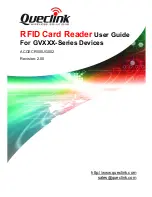
9. Error Handling > PCI as Originating Interface
75
PEB383 User Manual
July 25, 2011
Integrated Device Technology, Inc.
Confidential - NDA Required
4.
Header is logged in the
“PCIe Secondary Header Log 1 Register”
and ERR_PTR is updated in the
“PCIe Secondary Error Capabilities and Control Register”
if R_TA Mask bit is clear in
Secondary Uncorrectable Error Mask Register”
and ERR_PTR is not valid
5.
Error Fatal or Non-Fatal message is generated on PCIe as per the severity level of R_TA bit in
“PCIe Secondary Uncorrectable Error Severity Register”
if R_TA Mask bit is clear in
Secondary Uncorrectable Error Mask Register”
and either SERR_EN bit is set in
or FTL_ERR_EN/NFTL_ERR_EN bit is set in
“PCIe Device Control and Status
6.
“PCI Control and Status Register”
if an error message (Fatal/Non-Fatal) is
generated and the SERR_EN bit is set in
“PCI Control and Status Register”
7.
FTL_ERR_DTD/NFTL_ERR_DTD bit is set in
“PCIe Device Control and Status Register”
9.3
PCI as Originating Interface
This section describes how the PEB383 handles errors for upstream transactions from PCI to PCIe (see
). The bridge supports TLP poisoning as a Transmitter to permit proper forwarding of parity
errors that occur on the PCI Interface.
Figure 24: Transaction Error Forwarding with PCI as Originating Interface
provides the error forwarding requirements for Uncorrectable data errors detected by the
PEB383 when a transaction targets the PCIe Interface. Posted and non-posted write data received on
the secondary PCI Interface with bad parity are forwarded to PCIe as Poisoned TLPs.
Table 15: Error Forwarding Requirements for Received PCI Errors
Received PCI Error
Forwarded PCIe Error
Write with Uncorrectable Data Error
Write request with Poisoned TLP
Req uestor
or Del ayed
Transaction
completer
PEB38x
C ompleter
PCIe
(Desti nati on
Interface)
PCI
(Origi nating
Interface)
















































